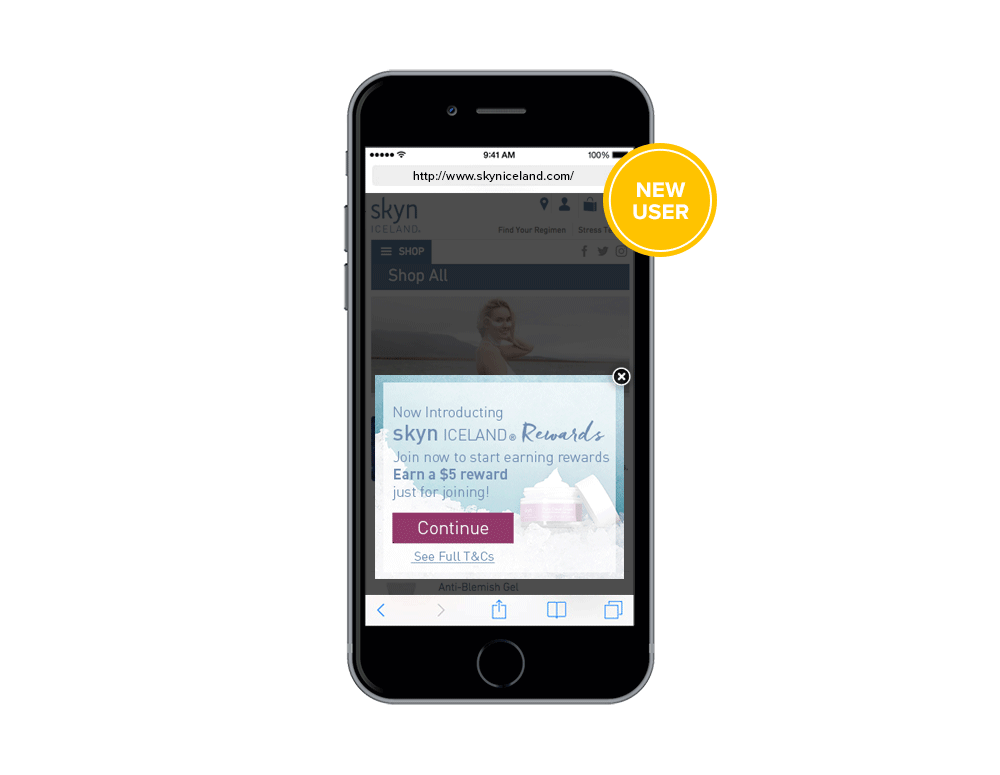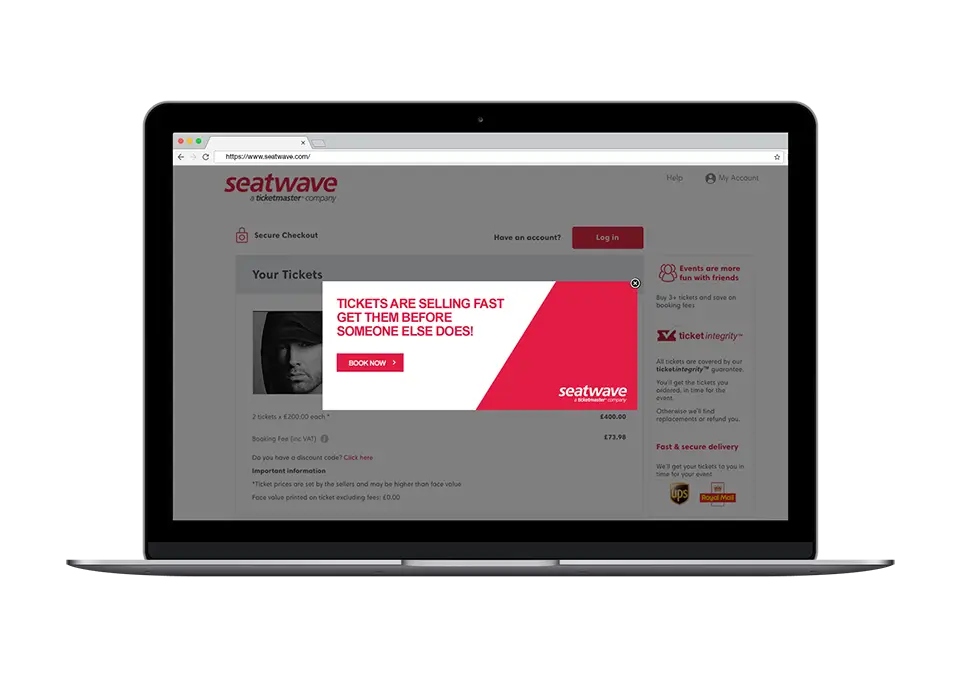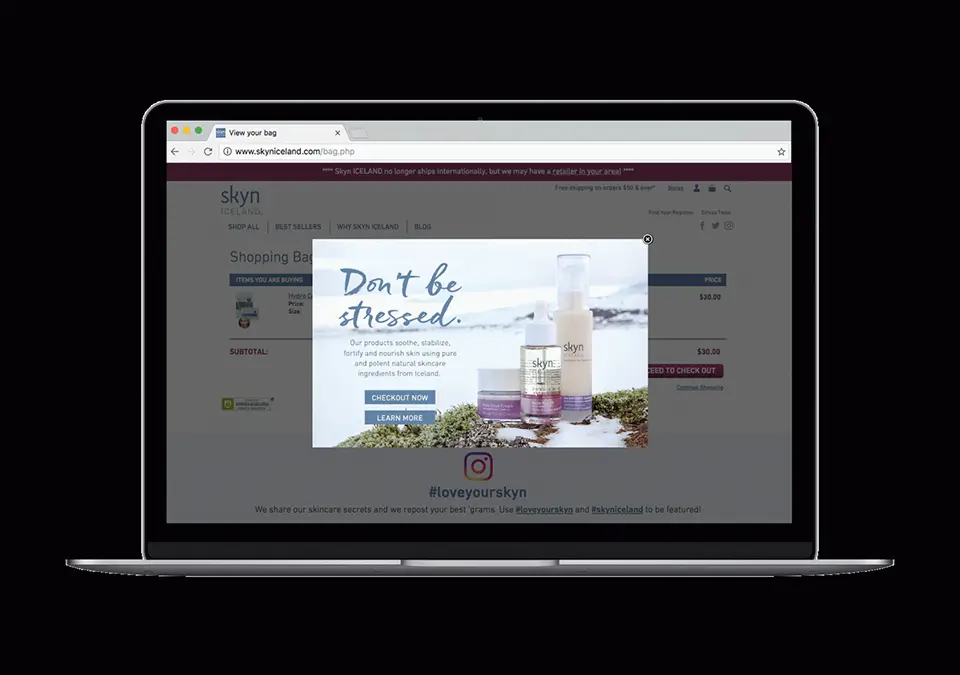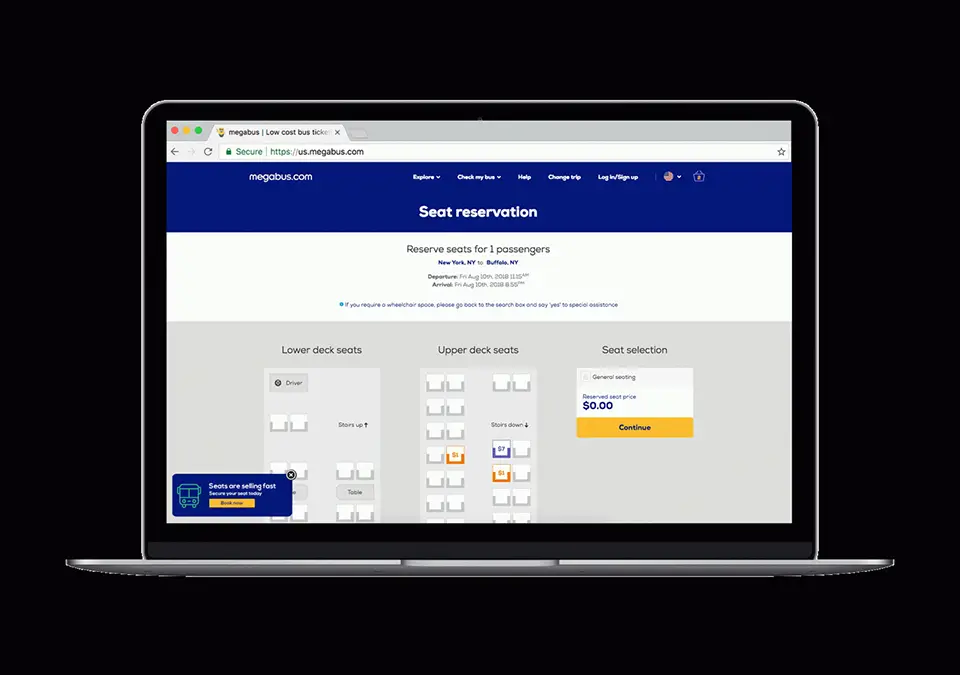EBOOK
How To Use Psychology in E-Commerce
Published: Sep 11, 2018
Why use psychology in e-commerce?
To understand psychology in e-commerce, and how to best use it, we need to first understand consumer behaviour, and go back to the offline world.
Research shows that 95% of all purchasing decisions are made subconsciously – the brick and mortar retail stores we shop in have long reflected this finding. From the layout of the aisles, to the way prices are displayed on shelf – savvy retailers have plotted and planned out every detail when it comes to the in-store customer experience, allowing them to push consumers toward purchase with psychological triggers and cues.
But when it comes to online shopping, the field has often been overlooked by e-commerce brands. Jez Groom, founder of behavioral economics specialists Cowry Consulting, recognises the problem:
“All too often, we see lessons learnt in the physical environment fundamentally lost and forgotten in the digital one. We know, for example, that top selling products are often the most easy to reach on shelves. So why, in the digital environment do we make everything so hard to choose?”
This guide will look at how brands can use psychology in e-commerce, bringing the online experience in line with in-store when it comes to understanding consumer behaviour.
We’ll draw on the seven principles of persuasion that behavioural scientist and ‘godfather’ of persuasion, Robert Cialdini identified, to share how brands can use psychology in e-commerce to target the right customer at the best point in their journey to drive more conversions.
Getting started with understanding consumer behaviour
Before we jump into the principles of persuasion, and how they apply to psychology in e-commerce, a word on understanding customer behaviour.
The foundation of any successful e-commerce strategy lies in understanding the customer. And when it comes to psychology in e-commerce, this means uncovering the reasons why customers behave as they do.
The 7 principles will help us with this, but with so much data out there it can be difficult to know where to begin. In fact only 6% of executives believe they know their customers’ needs very well, so it’s not so surprising that conversion rates are averaging between 2 and 3% for retail, and around 5% for travel.
Here are a few practical tips on where to start:
- Map the customer journey
- Test how consumers respond to the tactics outlined in this guide – we recommend A/B testing to optimise performance and ensure you get results that count.
- Ask! Gathering customer feedback gives you a direct line into the motivations of your visitors.
Once you’ve accomplished #1 from the list above, you should have a clearer view of your customer journey, which leaves the way open for some experimentation with the 7 principles of persuasion, so now let’s look at these in more detail!
The 7 principles of persuasion: reciprocity
The idea behind reciprocity is that humans don’t like to feel indebted to others in any way. By offering an item or service to potential customers for free, we can encourage them to consider ways in which they might balance out what they have received.
Obviously, no consumer is indebted to buy something because they were given a separate item free, nevertheless, that original gift can often induce a desire within the consumer to ‘return the favour’. It can be drawn as much from a sense of gratitude as it can from a sense of being indebted, but in either form, it’s a powerful motivator.
We see this utilised all the time in real-world consumer experiences – it’s a technique that is particularly popular with high street food chains selling relatively luxurious items. Both Krispy Kreme doughnuts and ice-cream makers Ben & Jerry’s set aside a specific day each year in which anyone can enter their store and a free doughnut or scoop of ice cream.In both cases the food given away would cost consumers a relatively small amount if purchased normally, but by giving away such treats en masse the companies manage to create a combination of goodwill and gratitude amongst their customers.

Reciprocity is a powerful tactic when it comes to psychology in e-commerce, too. In fact, food delivery service Uber Eats managed a very similar promotion in the past – using their fleet of drivers to deliver free ice cream upon request. The big difference is that their promotion required users to download their app – a smart way to engage consumers’ sense of reciprocity as well as actively signing them up to their service at the same time.
Reciprocity doesn’t always have to involve giving away free products – loyalty programs are another way of persuading customers to connect in a more lasting way. Vegan and cruelty-free beauty brand Skyn ICELAND sought to drive both new and existing customers to make return visits and more purchases in the future with the relaunch of its loyalty program. According to a study by Experian, the biggest challenge with loyalty programs is registrations, recognising this skyn ICELAND tailored on-site messaging to the visitors, informing them of the benefits depending on whether the customer was new or returning.

The 7 principles of persuasion: Scarcity
Consumers are more inclined to make decisions in favour of purchase if they know the product or service they’re interested in is not going to be available for long.
Scarcity is the psychological idea that captures this way of thinking. If a potential customer is concerned that not purchasing a product now will mean not being able to buy it later either, they’ll be incentivized to buy.

Streetwear brand Supreme is an extreme example of scarcity in real life. Every Thursday each season the clothing store releases a fresh batch of new limited edition items that are available to purchase from their brick-and-mortar stores worldwide. A combination of savvy marketing, brand reputation and the knowledge that once the items are sold out they’ll only be available at heightened prices from websites like eBay mean that a long queue forms outside the store every Wednesday night.
Where in-demand products like iPhones used to create such demand on an annual basis, Supreme succeeds every single week. Groom sums up neatly why Supreme’s tactics work so well:
“The scarcity principle means that people value things more that are in short supply, and so customers feel more compelled to buy products or services which are only available for a select group of people.”
Inventory that is naturally limited or perishable, like tickets for travel or concerts, is a perfect fit for this use of psychology in e-commerce. SeatWave, a ticket reseller saw a +155.6% uplift in conversion by using scarcity messaging that highlighted the limited timeline and quantity available for visitors who had added tickets to the cart, but were exiting the site.

Even if stocks are plentiful there are ways of demonstrating scarcity to your customers. Speedy delivery is increasingly becoming an important motivator for consumers, with 49% of shoppers saying same-day delivery makes them more likely to shop online. If your company can deliver today or tomorrow, highlighting cut off points for such a service can create an idea of scarcity too. A customer hesitating over an order will purchase, rather than not have the product as soon as possible. Learn more about leveraging psychology in e-commerce via the scarcity principle in our online masterclass here.
The 7 principles of persuasion: Authority
People have an inherent tendency to trust sources of authority, and this can make these sources persuasive factors in encouraging consumers to make decisions.
Groom tells us:
“We tend to place more weight on the opinions of authority figures, which is known as authority bias. Interestingly, we helped one of the oldest and established brands in one of the newest and freshest grocery categories – food box deliveries (like HelloFresh and Gousto) – significantly increase responses, and decrease acquisition cost, by highlighting that they had been delivering boxes of organic food ingredients to peoples’ doors for 27 ¾ years.”
The idea of a trusted figure is central to a great deal of marketing, and the same applies for psychology in e-commerce. Who (or what) that figure is can vary greatly depending on the product or service being sold. Today you’ll see dentists recommending toothpaste brands and authors like Stephen King recommending the latest horror books. A Whiskas pet food advert in the 1980s even used cats as an authority figure, declaring 8 out of 10 cats preferred their brand.
More contemporary authority figures come in the form of social media influencers, who can often reach audiences of millions through their blogs and YouTube channels. Specialist hair product brand Ouidad teamed up with beauty bloggers who had authority amongst the brands target market – people with curly hair.
By building a relationship with bloggers, Ouidad is able to share information about its products more widely, and gains a respected third party to act as an audience ambassador. On the Ouidad blog, this informational content is then linked to a diagnostic quiz, pushing users toward products that are suited to their curl type. Watch the masterclass featuring Ouidad’s Director of E-commerce, Katrina Seitz, to learn more about how the brand bridges content and commerce!

Not all authority sources need to be external to the company itself, though. Sometimes authority can be demonstrated through qualities regarding the products or services themselves. Food retailers will point customers to the fact that their product is organic or Fairtrade because these are qualities that will guarantee certain things about what they’re purchasing. In Japan, Kobe beef can draw remarkable prices because the rigorously monitored production guarantees an unmatched quality.
Jennifer Hey, Head of Digital and Customer Experience at online butcher Farmison & Co shares how the brand applies this idea of having a trusted reputation when it comes to psychology in e-commerce:
“Something that works really well for us is displaying our rewards for all to see – we’ve won Online Butcher of the Year 2 years in a row, we’re really proud of this, so it’s a really key message we want our customers to see as a trust signal.
We have this on our marketing emails, in our PPC copy and more places onsite, but where Yieldify has helped is to get it in front of users wherever they land on our site and in a more noticeable way, without interrupting the customer journey.”
Luxury pen and watchmaker Montblanc similarly highlight the exclusive services offered to customers via notifications showcasing free engraving or personalization. The artisan reputation of the employees themselves creates a reason for consumers to take advantage of the offer by buying a product that they can have engraved by finely skilled hands.
The 7 principles of persuasion: Commitment and Consistency
On a deeper psychological level, Cialdini suggests that humans have an inbuilt need to be seen as consistent individuals. This carries through into everyday life in a more practically observable way – if someone makes a commitment, they are much more likely to follow through on it.
There’s more to the test-drive offered by a car salesperson than just the opportunity to get a feel by your potential purchase. By committing to a test-drive, and taking the salesperson’s time, there’s a psychological debt that makes you more likely to follow through and purchase the car.
The recent boom in direct to consumer mattress retailers is interesting considering the various factors they are up against – not least asking consumers to buy one of the most important household items without seeing it in person. So they are an interesting example to consider when it comes to psychology in e-commerce. For instance, they might want to partner with multiple review sites like Sleep Advisor and get featured. This way, the customers can make a knowledgeable purchase decision.
For one retailer, Simba, the answer has been to provide 100 day free trials of the products. Potential customers are informed that once they purchase their mattress they have over three months to try it out safe in the knowledge that if it doesn’t meet their standards they can return it free of charge.

This idea commits customers to buying the product but also gives them peace of mind. In fact, the offer itself plays into the psychology of authority, too. Consumers will see that Simba have enough confidence in their product to make such an offer and think that the product must be worthy of that confidence.
Using guarantees along these lines to encourage commitment can work across other industries too – online gaming distribution platform Steam allows consumers to buy and download computer games, but there myriad reasons for people to be wary of purchasing their games online. Perhaps their computer won’t have the correct specifications to run the game. Perhaps they simply won’t like it. Steam counter these fears by offering a two-hour return policy. Customers can purchase and download a game, and then can play it for two hours to make sure it lives up to their expectations (or simply that they aren’t terrible at it)! If they decide they don’t want the game they can return it in that time for a full refund.

Online gaming sites are increasingly using guarantees to get initial commitments from users, too. Bethard frequently feature offers on major sporting events, such as the World Cup, where users are guaranteed their money back in the form of other bets should they lose on their first one. This gives customers a reason to commit knowing that the worst case scenario is another chance to bet.
The 7 principles of persuasion: Liking
Sometimes psychological ideas are incredibly simple: the more consumers like a brand, the more they’ll be likely to make a purchase.
Brand loyalty is no new idea, and that’s because it stems from a deeply held psychological instinct to stick with what we know and like. And so, for brands looking to bring new customers in, there should always be a focus on what the customer is looking for – what they’ll like about your brand.
High street stores like Lush and The Body Shop will often make a point of highlighting the good causes they support in their shop windows – they understand that these are factors their customers consider when buying their goods. UK based independent ‘supermarket rebels’ HISBE doesn’t have the instant brand recognition, so their shopfront is used as a giant advert for the all the reasons potential customers might like what they’re doing:

Skyn ICELAND learned how powerful the concept of liking was as part of their psychology in e-commerce strategy with a simple A/B test. Yieldify targeted visitors who had items in their baskets but were showing intent to leave with two different messages: $5 off their purchase and brand USPs: natural ingredients and products that would help fight stress.

Ultimately both messages were effective at raising conversion rates, but the clear winner was the USP message providing users simple but effective reasons to like the brand and get onboard with their values.
The 7 principles of persuasion: Social Proof
There’s safety in numbers – at least, that’s the idea behind the psychological benefits of consensus, where people are more likely to do what they can observe others doing.
This is why brands like Supreme and Apple enjoy putting their long winding queues out on the street, so passing consumers can pass by and consider joining themselves. It’s also why social proof is such a powerful tool when it comes to psychology in e-commerce.
Groom has seen the results of this:
“When we’re unsure how to behave in a situation, we tend to follow the behaviour of others, which behavioural economists have called social proof. We employed social proof in our work for a major multiple when we redesigned their emails promoting an online grocery service. By simply stating the average amount saved by each customer, we decreased the cost per acquisition by over 10%.”
Social proof allows us to show potential customers what other users are doing. This might take the form of a gallery on each product page showing what others are also purchasing when they buy that product, or simply how many others are browsing a particular product.
Based on Yieldify’s benchmark data from over 155k campaigns, websites that use Dynamic Social Proof can drive conversion rate uplifts from +6.6%, up to as high as +48.3% depending on the targeting criteria, with the average falling around +8.5%. Brands who have seen success with this include Kicker’s, Megabus and M.J. Bale. Megabus even combined scarcity with social proof to ensure visitors moved down the booking funnel, driving a 7.5% uplift in conversion rate.

Social proof can also provide a sense of authority for consumers. Websites such as TripAdvisor collate experiences from people who have already visited a hotel or restaurant to give potential future visitors authoritative voices on which place they should book themselves.
One industry where this idea of trust is especially important is healthcare. Yieldify worked with online doctor and pharmacy MedExpress to highlight the company’s Trustpilot score across their website, driving a 12.2% uplift in conversions. In such a sensitive industry positive customer experiences become the most important authority of all.
The 7 principles of persuasion: Unity
Thirty years after his initial six persuasion principles, Cialdini identified a seventh psychological factor – unity. This relates to the idea that people will make decisions they think will help them feel a sense of belonging.
Playing into this innate need to feel a part of something is a powerful way to market a company. We’ve seen it throughout this guide to psychology in e-commerce already. The crowds of people queuing every Thursday to be part of Supreme’s distinct streetwear culture. The bringing together of curly-haired women to champion Ouidad’s shampoos. Even supermarket HISBE’s marketing highlighted the local produce sold there, allowing customers to feel like a contributing member of the local community.
There are plenty of ways to utilise this 7th principle when it comes to psychology in e-commerce. Music festivals are a great example of brands that manage to create a sense of unity around their product by making their customers feel part of a unique club – those who were there, sharing the experience for that one weekend. Loyalty programmes are an established way to bring about that sense of unity too. Exclusive deals sent out each week to a small ‘loyalty club’ will heighten the idea that your customers belong, and that your business is an important part of that.
More recently, crowdsourcing has been adopted by savvy online-only brands seeking to get their customers more invested in products. Cult online beauty brand Glossier crowdsourced a face cleanser, and it’s now one of the brands bestsellers!

Conclusion
Succeeding with applying psychology in e-commerce means understanding customer behaviour. The same subconscious drivers shoppers experience offline play heavily into online shopping habits too. The seven principles of persuasion are a great starting point for incorporating psychology in e-commerce into your ongoing site optimization efforts. Remember the following the next time you’re launching a campaign and test what works for your visitors:
Reciprocity: instil a sense of indebted gratitude in your customers.
Scarcity: make customers aware of how they might miss out.
Authority: encourage customers through trusted voices.
Commitment & consistency: lead customers to big purchases through smaller commitments.
Liking: make customers feel good about buying from you.
Social proof: let the wisdom of the crowd lead your customer’s decision-making
Unity: help your customers build a sense of belonging
Combine two or more of these factors, and you’ll be well on your way to improving conversions for your business. If you’d like help understanding your customer journeys and applying these pscyhology in e-commerce examples, you can book a free consultation below.